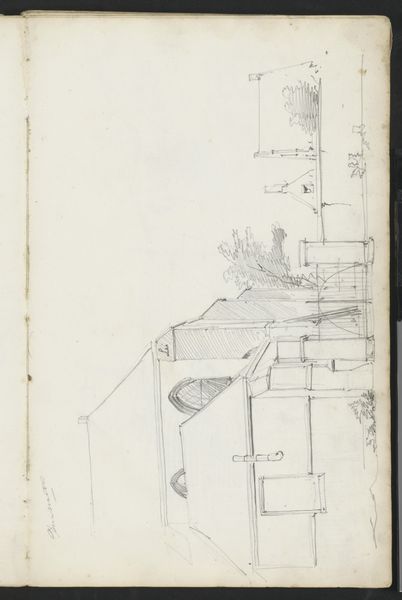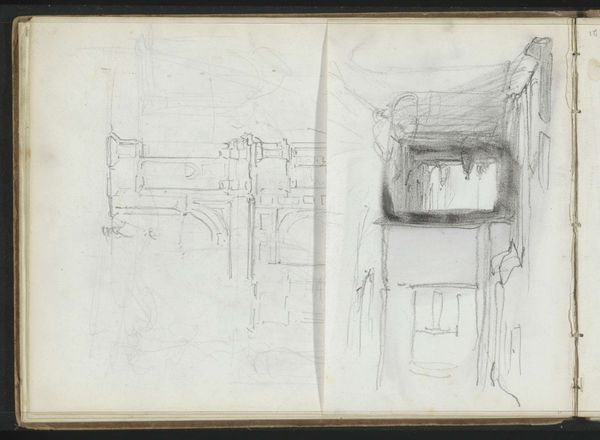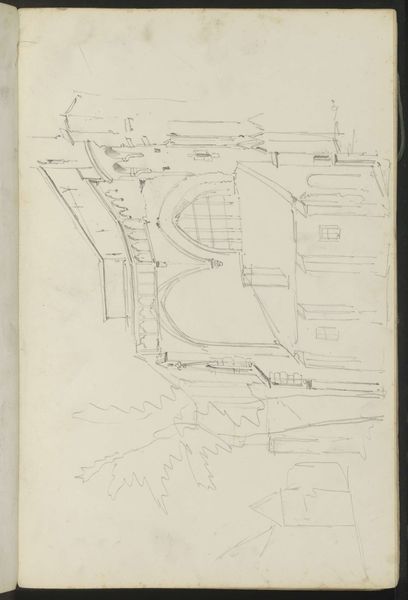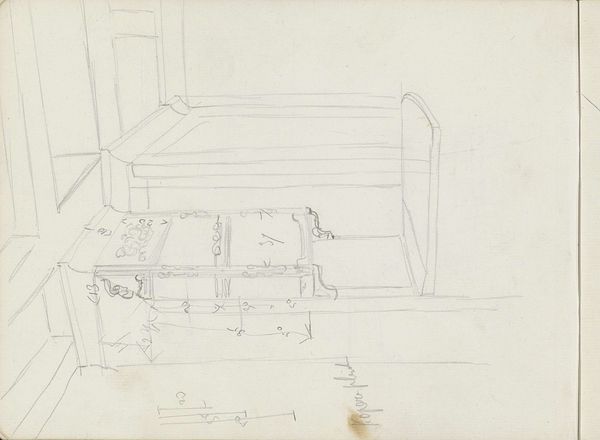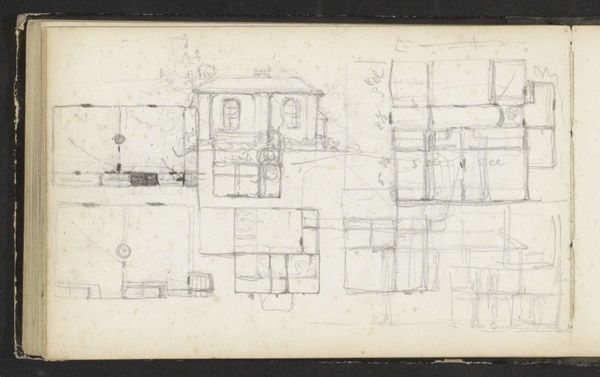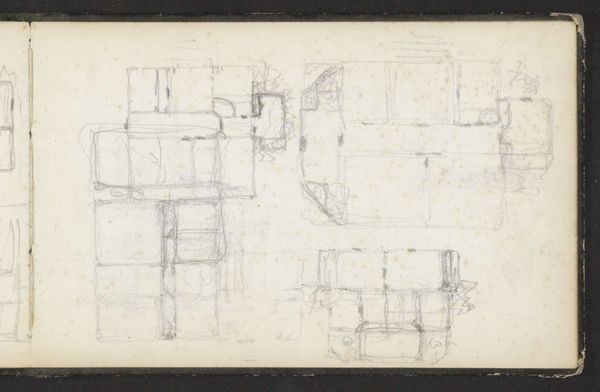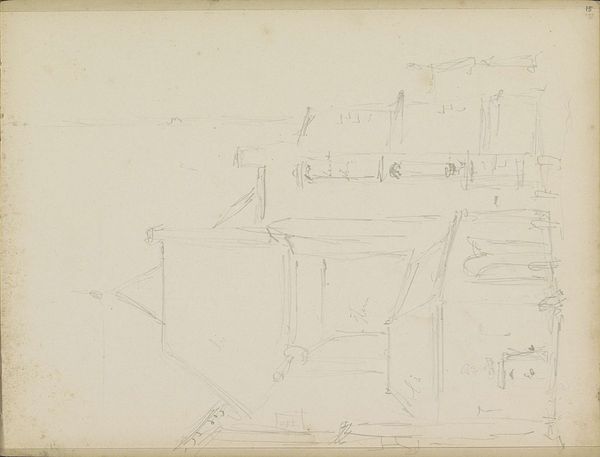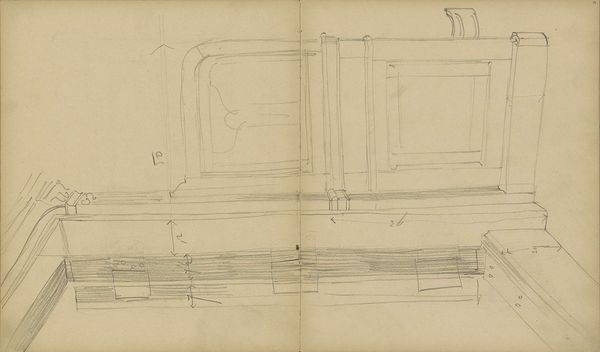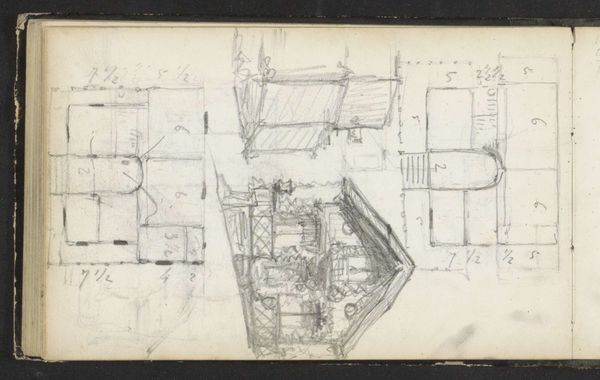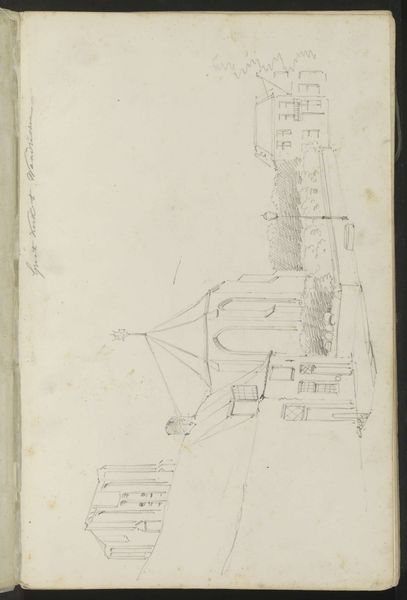
drawing, paper, pencil
#
drawing
#
paper
#
geometric
#
column
#
pencil
#
line
Copyright: Rijks Museum: Open Domain
Editor: This is Johannes Bosboom's "Zuilengalerij in een kerk," or "Colonnade in a Church," made sometime between 1827 and 1891. It’s a pencil drawing on paper, currently held at the Rijksmuseum. I'm struck by the almost mathematical quality of the lines, but also how unfinished it feels. What stands out to you? Curator: What immediately grabs me is the intersection of the sacred space, rendered through these precise lines, with the implied human presence – the artist observing, documenting. It raises questions about power dynamics. Who has access to these spaces? What stories do these columns conceal? Editor: Power dynamics... that’s interesting. I was mostly just thinking about the architecture itself. Curator: But architecture is never neutral, is it? These columns, this church, were built within specific social, political, and economic contexts. Think about who funded it, who worshipped there, and who was excluded. These buildings often reinforced existing hierarchies. What do you make of the unfinished nature, then? Is it simply a sketch, or could it represent something more, such as the imperfection and vulnerability of religious institutions themselves? Editor: I see what you mean. Maybe the incompleteness suggests the church is constantly evolving, changing with the times? Curator: Exactly! Or, perhaps it acknowledges that no institution can ever fully achieve its stated ideals. And the lines, while precise, are still drawn by a hand, subject to human error and interpretation. Where do we see human imperfections reflected in idealized institutions today? Editor: Thinking about it that way… changes my perspective completely. I came in looking at lines, but I’m leaving with questions about societal structures. Curator: That’s the beauty of engaging with art, isn’t it? It encourages us to critically examine the world around us.
Comments
No comments
Be the first to comment and join the conversation on the ultimate creative platform.
